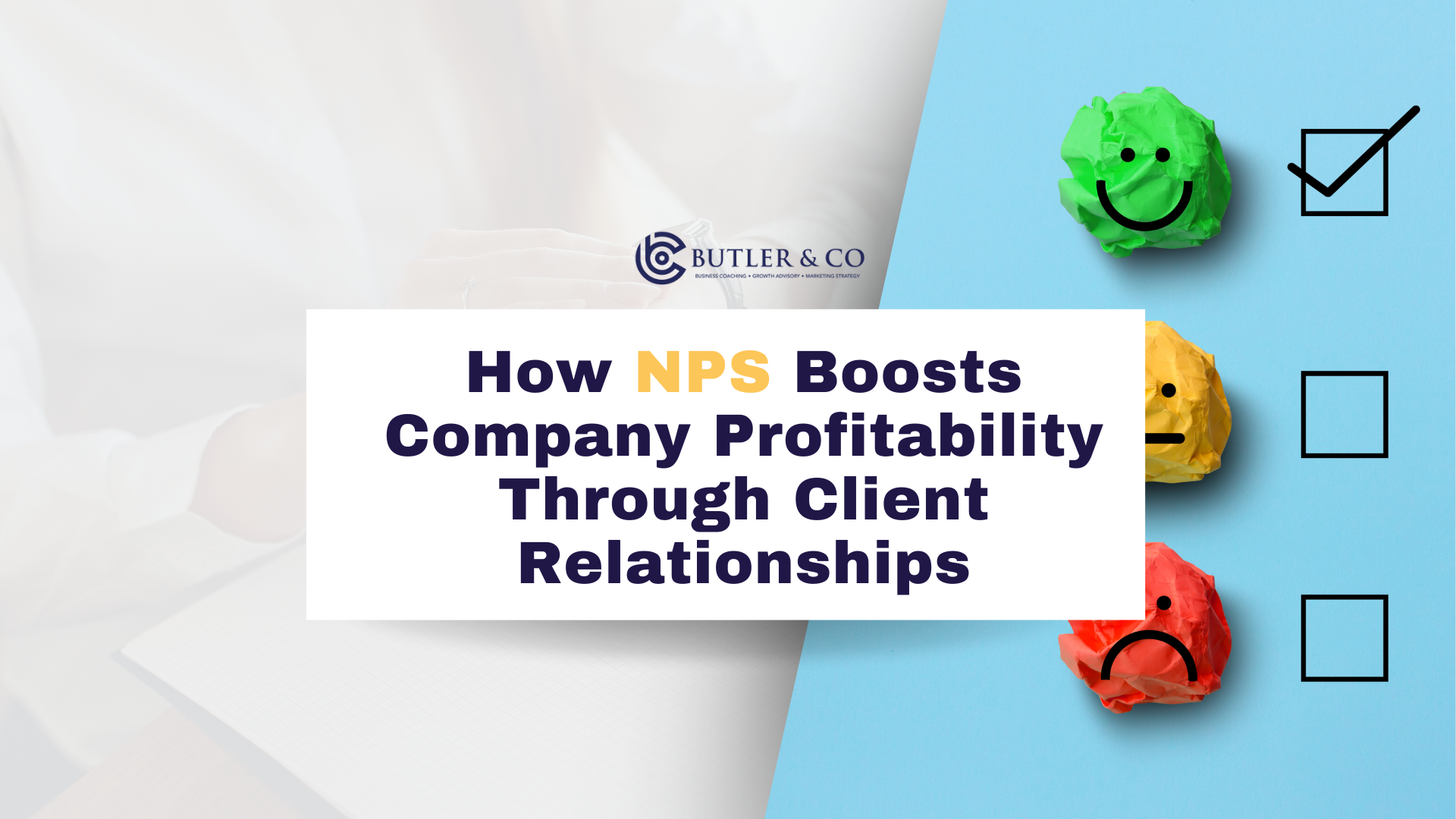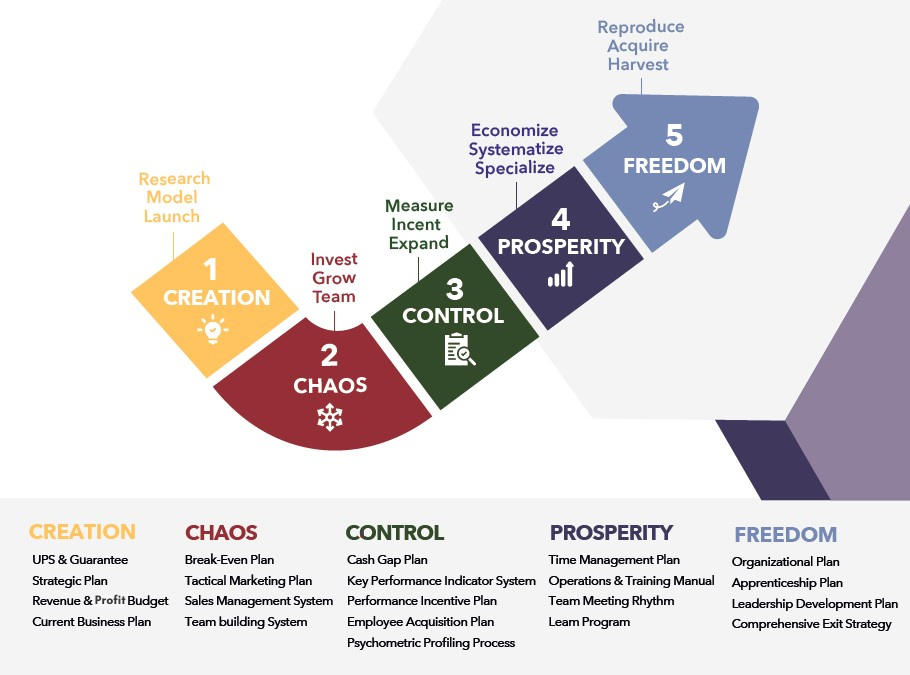Your Business Growth Partner
GUIDING THE 'BEST KEPT SECRETS' TO #1 IN THEIR MARKET
Trent Butler is a Chartered Accountant who acts as a Business Coach, Growth Advisor and Marketing Strategist to growth-minded professional service business owners.
We'll help you increase your profits, implement systems to improve operations and build a team that can operate without you - giving you the money and freedom to live the life you want.
Your Business Growth Partner
GUIDING THE 'BEST KEPT SECRETS' TO #1 IN THEIR MARKET
Trent Butler is a Chartered Accountant who acts as a Business Coach, Growth Advisor and Marketing Strategist to growth-minded professional service business owners.
We'll help you increase your profits, implement systems to improve operations and build a team that can operate without you - giving you the money and freedom to live the life you want.
Just a few of the 'best kept secrets' we've worked with:


"I was attracted to Trent's clarity of what could be achieved, his process driven approach to achieving objectives, coupled with his knowledge and experience. It's been absolute pleasure working with Trent and his team. I am extremely pleased with the results...”
Giles Hill
Director, EQ Property
The Truth Is You Have A Lot On Your Plate When It Comes To Being #1 In Your Market...
You Might Be Struggling With:
Identifying & attracting the right type of higher-value client
- Past efforts have attracted the wrong type of client.
- Prospects just want to know 'price' and don't seem to care about anything else.
- Leads seem to take forever to sign-up and become a client.
You just want to attract higher-value clients who value your expertise and expect to pay a fair premium to work with you.
Monitoring cash flow & tracking return on investment
- You’re unsure what metrics to be tracking.
- You’re not clear on what benchmarks to aim for.
- You're not sure if your marketing is making or losing money.
You just want to understand dollars-in vs dollars-out and whether or not it's all worth it.
Developing process and people to handle the next growth phase
- Growth is starting to cause other operational challenges.
- Getting the right people in the right seats has become easier said than done.
- The team can never quite seem to follow process or consistently achieve what is expected.
- You're getting pulled in a hundred different directions and clients are beginning to notice.
You just want to get everyone on the same page and following processes that actually work and scale.
Figuring out what to do and what not to do next from a marketing and business development standpoint
- Exactly who is our ideal client and how do we get more of them?
- Just what is our point of difference (or do we even have one)?
- Do people see us as a commodity service provider?
- What 'tactics' would work best specifically for our firm and stage of business?
- Where should we be spending our marketing dollars and efforts?
You just want to know what you should be doing and why.
Aligning the leadership team on strategy, planning and execution
- The leadership team is losing sight of the bigger picture (core mission, vision and values).
- Key team members just can't seem to agree on what should be done next, how and why.
- Problems use to be handled quickly but now take weeks/months to resolve.
- Important but not urgent activities are just not getting done.
You just want everyone in the business aligned and beating to the same drum.
Just a few of the 'best kept secrets' we've worked with:







"I was attracted to Trent's clarity of what could be achieved, his process driven approach to achieving objectives, coupled with his knowledge and experience. It's been absolute pleasure working with Trent and his team. I am extremely pleased with the results...”
Giles Hill
Director, EQ Property
THE TRUTH IS YOU HAVE A LOT ON YOUR PLATE WHEN IT COMES TO BEING #1 IN YOUR MARKET...
You Might Be Struggling With:
Identifying & attracting the right type of higher-value client
- Past efforts have attracted the wrong type of client.
- Prospects just want to know 'price' and don't seem to care about anything else.
- Leads seem to take forever to sign-up and become a client.
You just want to attract higher-value clients who value your expertise and expect to pay a fair premium to work with you.
Monitoring cash flow & tracking return on investment
- You’re unsure what metrics to be tracking.
- You’re not clear on what benchmarks to aim for.
- You're not sure if your marketing is making or losing money.
You just want to understand dollars-in vs dollars-out and whether or not it's all worth it.
Developing process and people to handle the next growth phase
- Growth is starting to cause other operational challenges.
- Getting the right people in the right seats has become easier said than done.
- The team can never quite seem to follow process or consistently achieve what is expected.
- You're getting pulled in a hundred different directions and clients are beginning to notice.
You just want to get everyone on the same page and following processes that actually work and scale.
Figuring out what to do and what not to do next from a marketing and business development standpoint
- Exactly who is our ideal client and how do we get more of them?
- Just what is our point of difference (or do we even have one)?
- Do people see us as a commodity service provider?
- What 'tactics' would work best specifically for our firm and stage of business?
- Where should we be spending our marketing dollars and efforts?
You just want to know what you should be doing and why.
Aligning the leadership team on strategy, planning and execution
- The leadership team is losing sight of the bigger picture (core mission, vision and values).
- Key team members just can't seem to agree on what should be done next, how and why.
- Problems use to be handled quickly but now take weeks/months to resolve.
- Important but not urgent activities are just not getting done.
You just want everyone in the business aligned and beating to the same drum.
Professional business coaching can help you:
Improve operations, implement systems and remove bottlenecks so that you get your time back.
Hire and train the right team, communicate better with each other and eliminate people problems.
Grow your business with bigger and better clients.
Overcome cash flow issues and improve your financial management.
Make better decisions and become more profitable.
WELL... YOU CAN!
Butler & Co Advisory is a small team of experienced entrepreneurs coaching aspiring entrepreneurs. We are experts in one thing – growing profitable companies through an appropriate mix of business coaching, growth advisory and marketing strategy consulting.
Whereever you're stuck, we can help:

MORE LEADS, SALES, AGGRESSIVE GROWTH?
YOU GOT IT.
MORE LEADS, SALES, AGGRESSIVE GROWTH? YOU GOT IT.
You won’t believe how easy it is to get your phone ringing with top-shelf, ready-to-buy prospects until you see our methodology for yourself. It’s time for you to set the pace and leave your competitors behind.

RECRUIT & RETAIN WINNERS INSTEAD OF LOSERS?
COMING RIGHT UP.
RECRUIT & RETAIN WINNERS INSTEAD OF LOSERS? COMING RIGHT UP.
Only the very best hiring managers win the perpetual war for talent. You’ll join the ranks of elite recruiters when you learn how the top guns do it. It’s time to get the rock stars you deserve and let the rest work for the others.

CONTROL YOUR CASH AND STASH MONEY AWAY?
EASY.
CONTROL YOUR CASH AND STASH MONEY AWAY? EASY.
Smart business owners know how to control costs, forecast and manage cash, and grow profits. It’s time to control the flow of money through your business and build a large pile of cash in your bank account.

GET YOUR BUSINESS READY TO SELL FOR BIG BUCKS? LET’S ROLL.
Any business can be turned into a cash machine that runs with minimal to zero daily involvement of the owner(s). It’s time to turn your staff into a team that will run your business like they own it, so you can sell it to whomever you wish, whenever you wish.
Who We Work With
We work primarily with established business owners in the following categories.

Advisory Firms
Accounting firms, consulting firms, real estate agencies, medical clinics and marketing agencies.

Professionals
Consultants, coaches, real estate agents, accountants, mortgage brokers, medical practitioners, marketers and freelancers.

Our Founder & Lead Business Coach, Trent Butler
The vision of Butler & Co Advisory is to be the undisputed market leader in business growth advisory services in Australia.
Our plan to achieve that vision is to work hand-in-hand with a smaller volume of exceptionally talented industry experts, taking each of them to 'market-leader' status in their respective niches and/or geographic locations. We then let their results do our talking.
A Chartered Accountant, Trent has over 10 years experience working across three different firms spanning the three 'tiers' of the accounting profession; a small boutique firm, a mid-tier firm and the ‘big 4’ firm – Pricewaterhouse Coopers.
Since founding Butler & Co Advisory in 2018, Trent has worked with over 50+ Australian professional service businesses. He deeply understands the nuances, growth challenges and stakeholder dynamics that present at every stage of a firm's life cycle.
Trent knows how both prospective clients and professional staff conduct their due diligence and choose a professional service provider in the modern digital world.
He understands that as your business grows and thrives, so will our partnership. So let’s talk, we promise it will be a breath of fresh air.
Our Founder & Lead Business Coach, Trent Butler
The vision of Butler & Co Advisory is to be the undisputed market leader in business growth advisory services in Australia.
Our plan to achieve that vision is to work hand-in-hand with a smaller volume of exceptionally talented industry experts, taking each of them to 'market-leader' status in their respective niches and/or geographic locations. We then let their results do our talking.
A Chartered Accountant, Trent has over 10 years experience working across three different firms spanning the three 'tiers' of the accounting profession; a small boutique firm, a mid-tier firm and the ‘big 4’ firm – Pricewaterhouse Coopers.
Since founding Butler & Co Advisory in 2018, Trent has worked with over 50+ Australian professional service businesses. He deeply understands the nuances, growth challenges and stakeholder dynamics that present at every stage of a firm's life cycle.
Trent knows how both prospective clients and professional staff conduct their due diligence and choose a professional service provider in the modern digital world.
He understands that as your business grows and thrives, so will our partnership. So let’s talk, we promise it will be a breath of fresh air.

What is Trent like to work with?
Click on the images below to watch the videos.
LOCATE BUYERS AGENCY
"Their [Trent's] approach with us has been fantastic and I really like that they actually care about their clients. They're actually interested in you getting the best results possible, and that shows up in how they work and how they approach what they do.
They're very strategic. They'll come up with great ideas and great ways in which you can improve on your business."
Shane Hiscock, Founder & Buyers Agent, Locate Buyers Agency

“They listened to our requirements and concerns and formulated a plan tailored to our specific circumstances. We feel they delivered a practical and detailed strategy that suits our needs and reflects our values and we are now working with Butler & Co to implement this.”
Chris Clarke
Partner, Clarke & Brownrigg Chartered Accountants Adelaide
CFO-ONE ADVISORS
“It took us a couple of months to really get clicking, and then around months three or four, we really started to see a huge return on investment which was fantastic.”
Mike Urness, CEO, CFO-One Advisors

“Wow very promising stats actually…Can’t wait to ramp this up next year given the high enquiry to click through rate and high organic search rate (with no SEO!)”
James Livingston
Founder & Partner,
Arc Medical Accountants
PROPERTY FRONTLINE
"What a positive experience it was working with Trent. What I particularly liked was the mix of tools and feedback that helped me connect with clients in a systemised and targeted way, which saved me so much time."
Debra Beck-Mewing, Founder & CEO, Property Frontline

“Working with Butler & Co has been such a positive experience, helping me develop a suitable marketing strategy and generate high quality leads. Butler & Co are very professional and have a very strategic approach with lead generating. We’ve achieved outstanding results and through my experience, I can honestly recommend Butler & Co and the services 100%.”
Maryanne Drosos
Founder & Director,
Blue Diamond Recruitment
B2B LEADS
“Being a lead gen and marketing guy, I thought my sales process was down pat to be honest...
He [Trent] showed me his methods of conducting sales calls and strategy sessions, which turned out to be way more effective."
Ryan Caswell, Founder, B2B Leads

“I'm so grateful for the support and guidance that Butler & Co’s business coaching has provided me thus far. Without them, I’m not sure if I would have continued in business. I'm now excited for the future and for what's next – we’re only just getting started!”
Kristie Oldfield
Founder & Director,
Parabroker.au
ACHIEVE MARKET LEADING STATUS WITHOUT:



The hassle and risk of taking on a business partner or prematurely hiring and managing a full-time marketing, finance or operations person.
Replacing your existing team members.
Throwing away what is already working.
Schedule a call to see if our approach can help take your business to #1 in your market.
ACHIEVE MARKET LEADING STATUS WITHOUT:
The hassle and risk of taking on a business partner or prematurely hiring and managing a full-time marketing, finance or operations person.
Replacing your existing team members.
Throwing away what is already working.
Schedule a call to see if our approach can help take your business to #1 in your market.
COACHING WILL PAY OFF OVER THE LONG TERM - AND WE GUARANTEE RESULTS.
'Win/Win' is a core value here at Butler & Co Advisory, which is why we offer a return on investment guarantee.
Investment presumes that there will be a return. Otherwise, it’s just an expense.
If you qualify – and do the work – we offer a guarantee:
After 17 weeks of coaching, you will agree that coaching has paid for itself - or we will work with you at no charge until that is true.
This drives us to do great work and ensure we're only commencing relationships with those who we're sure will see commercially positive outcomes.
Our latest articles to help you grow your business

Maximise Client Retention: How NPS Boosts Company Profitability Through Client Relationships
Maximise Client Retention: How NPS Boosts Company Profitability Through Client Relationships
NPS is short for Net Promoter System℠. It’s a powerful tool that can maximise client retention.
Let me explain why this is my focus in this article.
Retaining clients is crucial to the success and profitability of a business. As a business coach, I’ve watched business leaders underestimate the power of client retention when it comes to business growth. They come to me because they’re trying to boost their company revenue through product development, marketing campaigns and many more - but they’re not seeing the desired results.
Upon a closer look, I realised what was missing. They don’t put importance on client retention.
If you want to improve your business and profitability, pay attention to how you retain clients. Fortunately, there’s a powerful tool that you can use to enhance client retention so it leads to significant company growth and profitability. It’s called the Net Promoter System or NPS.
In this article, you’ll discover what an NPS is and how it can help you boost the growth of your business. You’ll also gain a deeper understanding of how clients can help you increase sales and profitability.
What is a Net Promoter System℠?
Back in 2003, a partner at Bain & Company created a way to measure how a company treats their clients. This man is Fred Reichheld. He developed a metric system called the Net Promoter System℠ or NPS to help businesses identify how many loyal customers they have against those who are dissatisfied with them or can easily be swayed to leave the business.
The concept behind NPS lies in a simple question: “On a scale of 0 to 10, how likely will you recommend our product/service?”
The response is then analysed to come up with an NPS Score and identify how many customers fall under 3 categories: Promoters, Passives and Detractors. If a company has more promoters over detractors, it has a high retention rate. This information can then be used to strengthen the company’s ability to create a beneficial relationship with its client base.
This system proved to be quite effective in increasing client retention among known companies like AT&T, eBay, Zappos, Tesla, Procter & Gamble, General Motors, Delta Air Lines, GE, Lego, Johnson & Johnson, etc.
3 Client Categories According to the NPS
To use the NPS metric efficiently, it’s important to understand the three categories that you’ll be measuring: Promoters, Passives and Detractors. Depending on how many clients fall under these categories, you can tailor your strategies to strengthen relationships and improve retention.
How will you determine what category the client falls into?
When you ask the recommendation question and the client chooses between 0 - 10, you can categorise them based on their answer.
Promoters (9 or 10)
The promoters are those who have chosen 9 or 10. They are the loyal and enthusiastic fans of your products and services. These people are more likely to show high satisfaction ratings and will provide free word-of-mouth advertising. They are the ones you can rely on to praise your brand and refer you to their family, friends and colleagues.
If you nurture these people, they can make a huge contribution to your referral system and in effect, the company’s long-term profitability.
Passives (7 or 8)
The passives are clients who have chosen 7 or 8. They are also satisfied with your products and services, but they are not enthusiastic about recommending you to others. Their satisfaction is only in the now - which means they are not yet loyal to your brand. They may decide to repurchase but it’s not a guarantee.
And since they are not yet loyal, they can still decide to switch to another company if something better catches their eye. You need to work harder to win these people over so they can feel more loyal to you. If you can convert them into Promoters, they can boost your client retention rate.
Detractors (0 to 6)
The detractors are those who voted 0 to 6. They are the ones who are not satisfied with your product or service. These are also the people who are more likely to defect or churn. This group can affect the brand’s reputation, especially if they are very vocal about their disappointment. If you don’t do anything to appease them, they could discourage potential clients and affect the morale of your team.
How to Calculate the NPS Score
To calculate the New Promoter Score, count how many of your clients are Promoters and Detractors. Get the percentage of these two categories and get the difference between them. The formula would be as follows:
NPS = %Promoters - %Detractors
So let’s assume that the Promoters are 50%, Passive are 30% and Detractors are 20%. Your company’s NPS will be 30.
Is this a good score for your company?
What is a Good NPS Score
Technically, the higher the NPS score, the better the client retention and referral rate will be. However, identifying what is a good score would depend on the industry that you are in.
Some experts would actually say that there’s no such thing as a “good” score. This is because it varies from one industry or sector to the next. Based on research, the Healthcare industry has an average of 62 while Telecommunications have 24.
For the purpose of having a benchmark, look at the average NPS in the industry you belong to. But don’t focus on that alone.
You should also set up internal benchmarks to push your team to improve their client relationships. It’s also important to realise that the NPS results would mean differently across various departments in your company. So the customer service team, for instance, should use the NPS score to improve client interactions. The product development team, on the other hand, should use it to upgrade the products being sold.
What does this all lead to?
In order to benefit from the NPS metric, your company should set unique goals that are relevant to the company. It should also be both measurable and realistic so it can be implemented easily.
Tips to Use NPS to Boost Company Profitability
Before you make plans, it’s important to realise that having a high score is not the objective here. The goal of this system is to determine how you can improve client relationships so you can boost retention, improve referrals and increase sales and revenue.
With what you know about the Net Promoter System℠, how can you use it to boost company profitability? As mentioned, the implementation would vary across different departments. But to give you ideas, here are a few tips you can follow.
Learn how to run NPS surveys to collect data
The NPS is not just about one recommendation survey. After you’ve done one survey, you have to analyse the data and create a follow up survey so you can create an improvement plan.
Imagine this scenario. A CRM tool is sold and it received incredible reviews for being effective. When clients are asked to answer a recommendation survey, it would result in a high percentage of Promoters. But this isn’t the whole scenario.
If another recommendation survey is created for the customer support and it showed a lower percentage of Promoters, what does it mean? It means the CRM tool is impressive but clients aren’t getting the after-sales support they need.
Make sure you know how to use different surveys to collect sufficient data to improve the company’s relationship with clients as a whole. Use different channels to distribute your surveys like emails, website widgets, etc.
Study promoters to increase referrals and brand awareness
Once you have your NPS data, take a look at the promoters. Study them because they can be a powerful ally in marketing your product. You can rely on them to increase your referrals and create brand awareness.
With what you know about the Promoters profiles, what type of referral scheme will encourage them to refer family and friends? This partnership can be a simple posting of a hashtag or product image on their personal social media accounts in exchange for freebies. Or you can encourage them to write reviews in exchange for an exclusive discount scheme.
Although Promoters will feel enthusiastic about referring you to others, it would increase their loyalty if you can incentivise their efforts.
Identify passive and detractor concerns to minimise churning
The NPS data will also show who the passive and detractor customers are.
For the passive clients, send them a survey to determine what is lacking in your company. What would make them recommend you to others. This will give you clues on what you can improve in product and service offered. Although they are satisfied with you at the moment, it’s not enough if they aren’t loyal to you.
For detractors, give them special attention. These are the people who can bring your brand’s reputation down. Talk to them about their negative experience and discuss how it can be improved. Show sincerity and be transparent about your initiative to listen to their concerns so you can serve them better.
Your genuine efforts will speak volumes and would make them feel valued. Once you’ve done the improvements, wait a couple of months to send another NPS survey. See if the detractors have changed their opinion about you.
Use NPS data to improve products and services
Use your NPS score to uncover issues and areas in need of improvement.
Send promoters a follow up survey to reveal the specific reason why they are satisfied with the company. For passive clients, ask them to give suggestions so you’ll know what need to be improved so you can get their loyalty. For detractors, the goal of your follow up survey is to understand what caused the disappointment.
Whatever is revealed in the follow-up survey will help you understand what your client-base is expecting from your company. Record each of the response and monitor how the answers change each time. This will help you understand what products got the lowest NPS scores and the most complaints. Focus on improving these or changing it into a new product.
Implement NPS Strategies to Achieve Growth
The Net Promoter System℠ is a powerful ally when it comes to improving client retention and increasing profitability. Remember, clients are evolving so getting their ideas and feedback regularly will allow you to stay ahead of trends and changing preferences. You can proactively improve your products and services to ensure high satisfaction among your clients.
While there’s no perfect company, having the right tool or metric system to identify your detractors will allow you to take steps to correct mistakes and improve shortcomings. The more you know about your clients, the better you can respond to their needs and forge powerful relationships. This will build a strong foundation that’ll lead to sustainable growth through higher retention and referral rates.
If you’d like help in implementing the Net Promoter System℠ in your company, partner with a business coach. I can help you implement the system and guide you in analysing the data as it leads to the improvement of your company and its profitability.
Are you ready to maximise client retention? Let’s talk. Book a complimentary 15-minute call here: https://www.butleradvisory.com.au/time-with-trent.
Subscribe To Watch Our Free Methodology Presentation: Learn Our Proven 5-Step System For Transforming Your Business Into A Firm That Runs Smoothly, Profitably and (mostly) without You.
Confirm Your Details To Continue

© 2023 Butler & Co Advisory. All Rights Reserved.
ABN: 76 635 141 794
Subscribe To Watch Our Free Methodology Presentation: Learn Our Proven 5-Step System For Transforming Your Business Into A Firm That Runs Smoothly, Profitably and (mostly) without You.
Confirm Your Details To Continue

Schedule a call to see if our approach can help take your business to #1 in your market.
No pie-in-the-sky. No generic ideas.
No hard sell.
Just straight-forward analysis of your approach to marketing and sales, team-building skills, gross and net profitability, and business transfer readiness.
